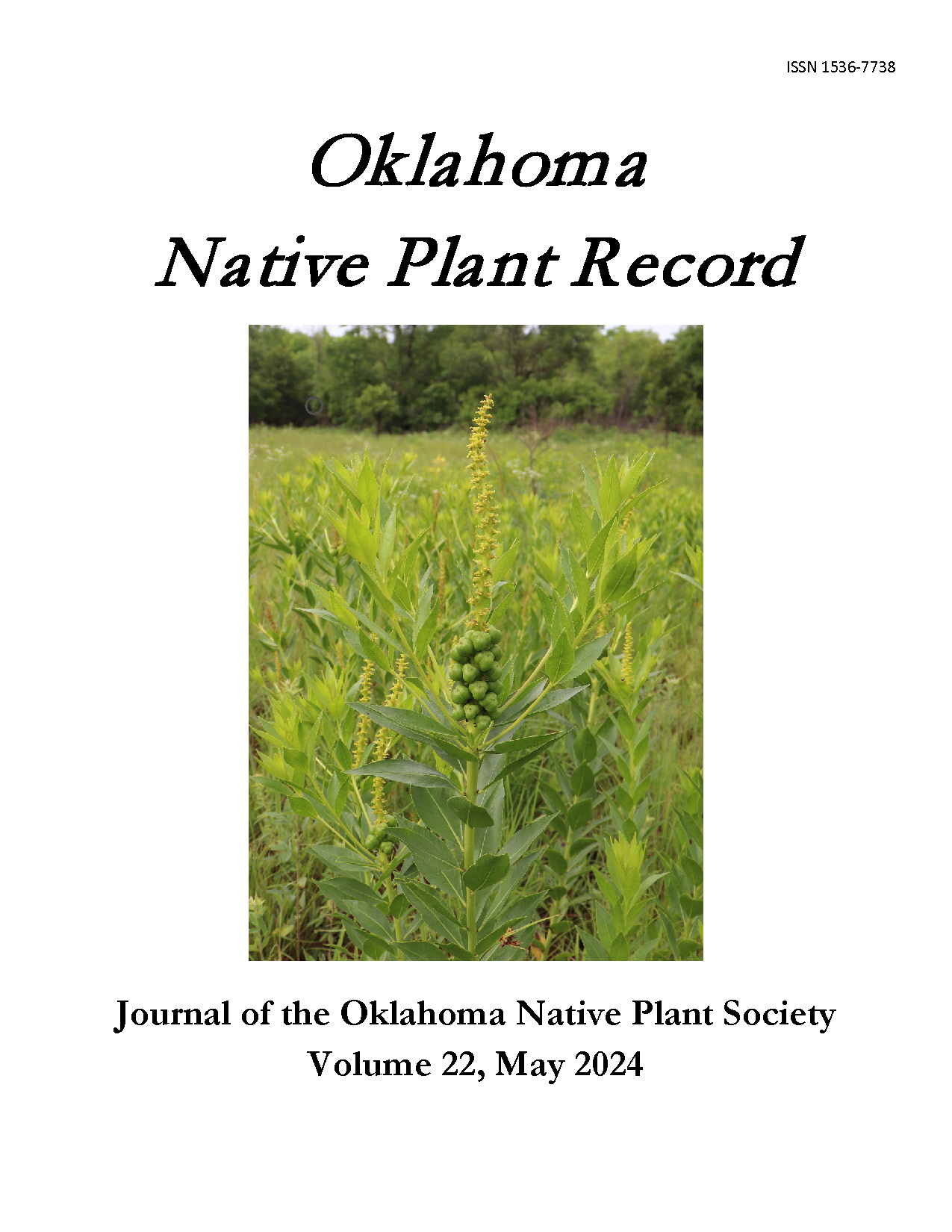Analysis of a Plant’s Response to Climate Change Factors Through the Use of Herbarium Records: Collinsia violacea Nutt. (Plantaginaceae)
Main Article Content
Abstract
Climate change has resulted in various changes to the phenology of species, and some of these changes have been documented through the use of herbarium specimens. Understanding how plants react to changes in the environment can give scientists insight into how plants have been responding and will respond to the continuing consequences of climate change as well as how to approach biodiversity conservation. In this study, herbarium records of Collinsia violacea Nutt. ranging from 1895 to 2014 were utilized to show the trends of the first and peak flowering dates with regard to various geographic and climatic variables using regression analysis. The results from simple linear regression analyses showed a trend of the flowering times for first and peak flowering dates occurring earlier over the years; however, the relationship was not significant. The multiple linear regression full model for first flowering indicated increases in latitude, longitude, and mean monthly temperatures were associated with delayed flowering while increases in monthly minimum and maximum temperatures were associated with earlier flowering. The full model for peak flowering showed that peak flowering was delayed with increases in latitude, longitude, and maximum monthly temperature. The reduced models, with highly correlated variables removed, indicated significant delays in first flowering and peak flowering with increases in latitude, longitude, and mean monthly temperature, but no significant relationship between monthly precipitation and flowering time. Further research is needed to fully understand the implications of these changes.
Article Details

This work is licensed under a Creative Commons Attribution-NonCommercial-ShareAlike 4.0 International License.
Articles (c) The Authors
Journal compilation (c) Oklahoma Native Plant Society
Except where otherwise noted, this work is licensed under a Creative Commons Attribution-NonCommercial-ShareAlike4.0 International License, (CC BY-NC-SA 4.0) https://creativecommons.org/licenses/by-nc-sa/4.0/, which permits unrestricted use, distribution, and reproduction in any medium, provided the original work is properly attributed, not used for commercial purposes, and, if transformed, the resulting work is redistributed under the same or similar license to this one.

